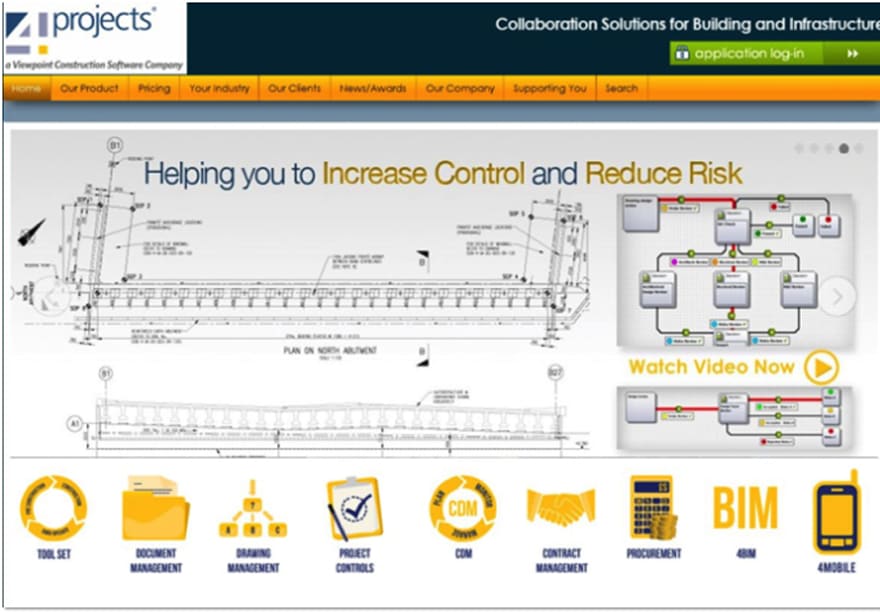- Client: Nestlé
- Lead Contractor: John Sisk
- BIM Tools: Autodesk Revit, Navisworks, 4Projects 4BIM, Synchro
Collaborative BIM helped improve construction coordination and validate costs when building this 29,730m³ freeze-dried coffee manufacturing facility, on a site next to an existing Nestlé factory in Tutbury, Derbyshire.
The design and build project, also known as Project Dove, features 12 separate buildings and is the largest build Nestlé has undertaken in the UK, forming part of a £500m investment programme.
The use of BIM was a by-product of Nestlé’s requirement to implement 4Projects’ collaborative project planning software to connect team members and suppliers, track changes and variations, manage document handover and provide a clear audit trail. The software also served as a collaborative data environment for sharing BIM information.
The project included 3D, 4D (time) and 5D (cost) elements, but was not fully BIM Level 2 compliant under the government definition, having been established in 2012 before PAS1192 came into full effect. For example, no COBie data drops were taken, although asset information, including operating and maintenance data, was uploaded into 4Projects for use by the client after handover.
3D BIM models were initially assembled in Revit by the architect, Darnton EGS, John Sisk, structural engineer WSP and the M&E specialist. These were pulled together in Navisworks for design review coordination and clash detection.

The use of BIM was a by-product of Nestlé’s requirement to implement 4Projects’ collaborative project planning software to connect team members and suppliers
The 3D models and John Sisk’s construction schedule were then imported into Synchro software and linked to create a 4D construction model, which was used to generate video animations simulating the proposed site set up, construction sequencing and logistics strategy.
This model was reviewed on a monthly basis, simulating the planned sequence of construction activities and site space requirements, also displaying side-by-side graphical examples of different scenarios. The free Synchro 4D Viewer enabled all project participants to view and analyse Synchro model files.
“It was very useful to visually show the team the differences in programme and how, for example, we could coordinate the lifting of large pieces of plant to improve safety without impacting on the progress of construction,” says Jon Harris, design leader for major projects at John Sisk.
According to Harris, working in 4D provided a better understanding of project milestones and construction plans, and the simulations helped identify potential problems well in advance of construction, when they were much simpler and less costly to resolve.
5D cost modelling was completed during the pre-construction stage, drawing down volumetric quantity data from 3D Revit models to check against the original bills of quantity or components and so validate the cost plan.
For example, the model of the structural reinforced concrete frame was used to schedule the concrete volumes and associated costs for floors, structural columns, foundations, walls and framing.
“We found that some of the quantities didn’t tie up, so we had to go back to the QS and ask them to make an adjustment to suit the cost plan, so the system proved quite useful,” adds Harris.
The 5D model was automatically updated in line with changes to design information, and the relative costs and cost assumptions could be reviewed visually on screen.
The use of BIM on Project Dove proved a success, but a few changes would have made it even more effective, says Harris: “It would be nice next time to create a full asset model with COBie data drops, although it wasn’t an employer requirement on this job, as well as implement Field BIM using tablets.
“But the main lesson learnt was to improve our BIM execution planning and how we structure how information is formatted and communicated. Now we have a standard, systematic methodology for setting up BIM projects in a collaborative data environment,” he concludes.
It was very useful to visually show the team the differences in programme and how, for example, we could coordinate the lifting of large pieces of plant to improve safety without impacting on the progress of construction.– Jon Harris, design leader for major projects at John Sisk












